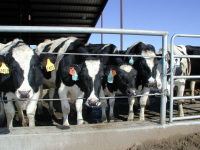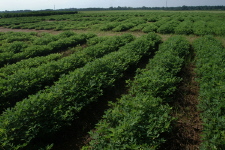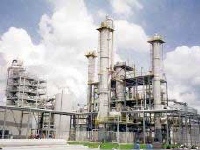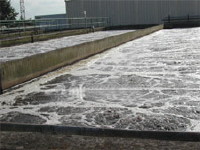Feedstocks for Biogas Production
Biogas can be produced from a broad range of feedstocks that are suitable for anaerobic digestion. Current ethanol technology requires feedstocks with high fermentable carbohydrate levels (e.g. corn and sugarcane), while biodiesel production requires feedstocks with high oil content (e.g. waste vegetable oils or virgin vegetable oil from oil seed crops). Both technologies require extensive pre-processes of feedstocks and only yield fuel from a portion of the native biomass material. In contrast, biogas can be made from most biomass and waste materials regardless of the composition and over a large range of moisture contents, with limited feedstock preparation. Feedstocks for biogas production may be solid, slurries, and both concentrated and dilute liquids. In fact, biogas can even be made from the left over organic material from both ethanol and biodiesel production.
Most of the existing installations are processing residual sludge from wastewater treatment plants. Other facilities are processing wastes from chicken processing, juice processing, brewing, and dairy production. However, the range of potential waste feedstocks is much broader including: municipal wastewater, residual sludge, food waste, food processing wastewater, dairy manure, poultry manure, aquaculture wastewater, seafood processing wastewater, yard wastes, and municipal solid wastes. Food processing wastewaters may come from citrus processing, dairy processing, vegetable canning, potato processing, breweries, and sugar production.
There are many potential energy crops, which may be suitable for biogas production including: sugarcane, sorghum, napier grass, as well as, woody crops (tree crops). The best crops should have low fertility requirements, and low energy costs for planting and harvesting. Further, ethanol production from an energy crop will produce large volumes of stillage wastewater, which can be converted to biogas. Also, the production of biodiesel from oil crops produces a glycerol wastewater that also may be converted to biogas.
Manure |
Biomass |
Ethanol and Biodiesel |
Wastewater |
Biogas from Sludge and Manure
The anaerobic digestion of sludge is perhaps the oldest anaerobic digestion technology. In spite of the many advances made in reactor designs for wastewater treatment, few can be applied in treatment of sludge and manure, as the high suspended solids content of this waste impedes biomass immobilization. However, a better understanding of the anaerobic digestion process has resulted in increases in organic loading rate (OLR) and process performance for sludge and manure treatment. In addition, the tendency of sludge and manure to cause odors and to host pathogens benefits the application of anaerobic digestion for treatment of these wastes for both odor and pathogen reduction, as well as energy production.
Characteristics of Sludge and Manure
In contrast to wastewater, the principle component contributing to the organic strength of sludge and manure is organic suspended solids (SS). The most important parameters for characterizing these slurries are total solids content (TS) and volatile solids content (VS). While chemical oxygen demand (COD) could also give a measure of the organic strength of slurries, sampling difficulties and limits of the COD procedure make COD measurements of slurries impractical. There is an upper limit for TS content above which the material is no longer a slurry, and mixing and pumping becomes problematic. This upper limit for TS is dependent on the rheological properties of the SS making up the slurry. For most manure and sludge this occurs at a TS of 10-15%. Waste with a higher TS content may be a candidate for high solids treatment or it will require dilution (preferably with effluent) if it is to be treated as a slurry.
Water is a principal component of manure and sludge, and facilitates the ability to transport the SS as a fluid. However, not only does the water content dilute the potential bioenergy content of the slurry, it also may impact anaerobic digester design and operation, by increasing the digester volume due to hydraulic retention time (HRT) limitations. Also, for mesophilic and thermophilic processes, the water content increases the consumption of heating energy. For slurries at 1% TS or less with an ambient temperature of 20 oC, digestion at mesophilic temperatures may consume the majority of biogas produced. Thus, in treatment of slurries with less than about 2% TS, pretreatment methods for concentrating the solids should be considered. If treatment of the separated liquids is desired, then anaerobic wastewater treatment processes should be considered for the liquid fraction.
When considering biogas production from a slurry, the VS content of the material is as important as the TS content, since it represents the fraction of the solid material that may be transformed into biogas. Most manure and sludge from municipal wastes have a VS content of 70-90% of the TS content. The fixed solids (FS, also termed the ash content) is comprised of inorganic material (grit, minerals and salts), which dilute energy content and can impact the treatment process. For some sludge from industrial sources, high FS may come from the use of process chemicals (e.g. lime precipitation).
Although the VS content is an indicator of potential methane production, the specific methane yield on a VS basis is not a constant, in contrast to the specific methane yield on a COD basis which is precisely 0.35 m3/kg COD destroyed. This is due to the composition of the VS of the waste which includes both readily degradable organic compounds including lipids, proteins, and carbohydrates, as well as more refractory organics which may include lignocellulosic materials, complex lipopolysacharides, structural proteins (keratin) and other refractory organics. For pure carbohydrates the specific methane yield on VS basis is 0.38 m3/kg VS destroyed, for proteins the yield varies depending on amino acid profile and averages 0.6 m3/kg VS destroyed and for pure lipids (vegetable oil) the specific methane yield is 1.0 m3/kg VS destroyed. This difference can be attributed to the high H:C ratio of lipids compared to carbohydrates. The complex nature of the composition of an organic waste means that the methane yield is best determined from anaerobic treatability assays on a suitable sample.
Finally, other components of sludge and manure can affect anaerobic treatment. For some manures (poultry and swine), the high protein levels in the manure contain significant amounts of nitrogen and sulfur which, upon mineralization to ammonia and sulfide, can limit the OLR due to their inhibitory effects. The sulfide also impacts biogas utilization and clean-up requirements. In municipal and industrial sludge, there is a potential for high concentrations of heavy metals, which can cause inhibition or competitive micronutrient deficiencies when anaerobic treatment is applied to these wastes. Also, inhibitory chemicals present in the sludge from industrial sources or in municipal sludge receiving industrial wastewaters can cause operational problems in anaerobic sludge digestion.
Biogas from Solid Waste (MSW)
Currently, treatment processes such as anaerobic digestion and composting offer the only biological route for recycling matter and nutrients from the organic fraction of municipal solid waste (MSW). Anaerobic digestion has been demonstrated to be a viable option for the management and stabilization of the biodegradable fraction of those wastes. Anaerobic digestion typically results in a 50% reduction of organic matter (volatile solids). The extent of conversion is dependent upon the feedstock and is similar to that obtained by aerobic composting operated at comparable residence times. Approximately 90% of the energy from the degraded organic matter is retained in the form of methane. The widespread natural occurrence of methane bacteria demonstrates that anaerobic digestion can take place over a variety of moisture contents from 60 to more than 99 percent. Thanks to this tolerance, anaerobic processes can be applied for decomposition of dry solids such as MSW.
For MSW, the quantity of methane is not trivial and typically amounts to around 100 to 200 cubic meters of biogas per ton of organic MSW digested. If we assume MSW contains about 30% water and 15% ash, one ton of MSW is equivalent to about 0.32 tons of dry organic matter. Treating one ton of this feedstock would generate about 0.21 tons of compost (dry weight including ash). The methane can be used in part for process energy requirements (coarse shredding of the input and leachate recycle) and the balance sold as a renewable energy.



